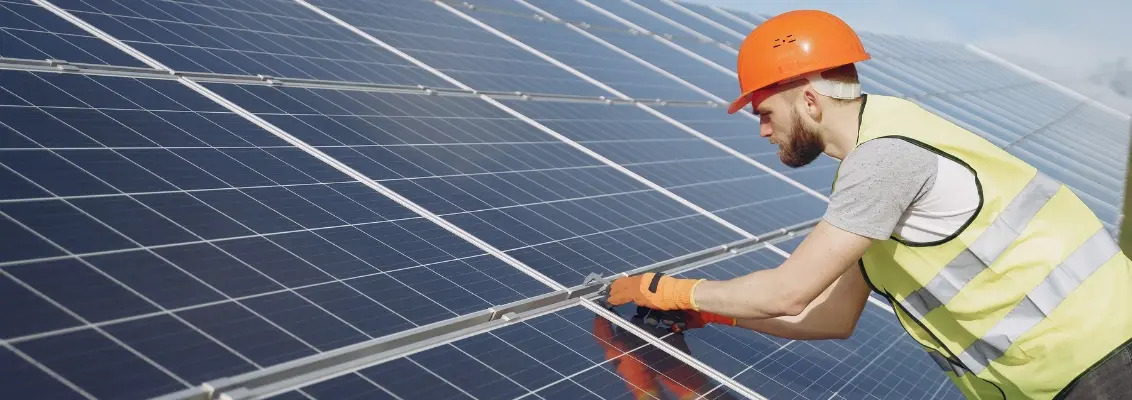3 Things to know about DC cables in solar systems
DC power cables play an important role in the transmission of electricity, they help ensure the integrity of the converted power from the photovoltaic system.

In the photovoltaic system, DC power cables play an important role in the transmission of electricity, they help ensure the integrity of the converted power from the photovoltaic system. Choosing the right DC power cables will save your project's costs and ensure safety during system operation.
Structure of the photovoltaic system
The solar energy system includes different components such as solar panels, inverters, solar chargers, and storage battery systems. In particular, the basic components will have the following functions:
- Solar panels: Pure silicon is the main component commonly found in solar panels. At the same time, for the panels to absorb light well, they also have light-sensing photodiodes with the task of receiving and converting solar energy into electricity to provide power for the whole system.
- Inverter: This is an important part that plays the role of converting the DC power of solar cells to AC power for easier use.
- Solar charging: The battery and photovoltaic system will work better and last longer thanks to the solar charger, which provides enough power for the battery system.
- Battery storage system: Solar power mainly depends on sunlight sources, so in case of a lack of sunlight for a long time, the battery will be the place to store the electricity. When a power outage or the solar system does not produce electricity, the battery will supply electricity consumption points.
Operation principle of the photovoltaic systems
Solar panels will absorb sunlight photons to produce direct current. At that time, the direct current (DC) through the inverter converter will convert the direct current into an alternating current. This current is similar to the grid electricity we use every day.
In case there is a storage battery, the above DC will be controlled by the charger and charged the DC into the storage battery. The direct current from the storage battery will be converted into alternating current thanks to the inverter, and from there it will be mixed into the domestic electricity network.
OTHER POSTS >>> 3 MAIN APPLICATIONS OF SUPER-PAAR-TRONIC 340-C-PUR SIGNAL CABLES
3 tips to choose DC power cables
1. Difference between DC and AC cables
DC and AC power cables are used for different purposes in a photovoltaic system.
- Application
The DC cables are used to connect the solar panels to the inverter, while the AC power cables are used to connect the inverter to the grid or the load.
- Structure and power transmission capacity
DC power cables (direct current transmission) are designed with a soft multi-strand core, good electrical conductivity, heat resistance, and usually have two insulation, and do not have surface effects like alternating current.
While AC power cables are designed to carry AC power (alternating current) there is usually one insulation.
With the unique characteristics of DC and AC power cables, you should choose the suitable cables for your situation. Power cables must have a rated voltage, and have insulation to ensure the safe and efficient operation of the system.
2. Weather conditions
Outdoor photovoltaic systems will be exposed to extreme weather for extended periods.
• UV radiation from the sun can degrade cable insulation, leading to cable failure over time.
• Rain, snow, and humidity can corrode cables, and extreme temperatures can cause cables to become brittle and break easily.
Therefore, it is important to choose a DC power cable that is weather-resistant and can withstand sunlight, rain, snow, and special elements from the surrounding environment.
3. Voltage drop problem
Voltage drop is a phenomenon where the upstream voltage is higher than the downstream voltage due to the loss of a portion of energy during transmission. The cause of this loss is the resistance on the cable. We can reduce the resistance in two ways:
- Increase conductor cross-section: We can use conductors with a larger area to reduce resistance. This way will increase the weight of the cable, so it costs materials and installation space.
- Minimize conductor length: The longer the power cable, the higher the voltage drop, so it is important to minimize the length of the cable as much as possible.
- A more effective way to reduce resistance is to choose conductors with good electrical conductivity. Conductors comply with EN 50618 - the DC wire standard for the solar power industry, you should give priority to choosing products from reputable and long-standing brands in the solar market.
_any_large.webp)
We, HELUKABEL Vietnam, hope that with the information just provided, you have obtained the necessary information for choosing DC power cables for photovoltaic systems. We are always ready to accompany you in projects to support electrical connection technical issues.
If you are looking for comprehensive electrical connection solutions for photovoltaic systems, or need advice on related technical issues, contact our specialized engineers for advice.
OTHER POSTS >>> A 360° Safety Net for Mining Vehicles
>>See more: Fiber optic cables for factories and offices
Find out more about HELUKABEL control cables and accessories on TIKI .




